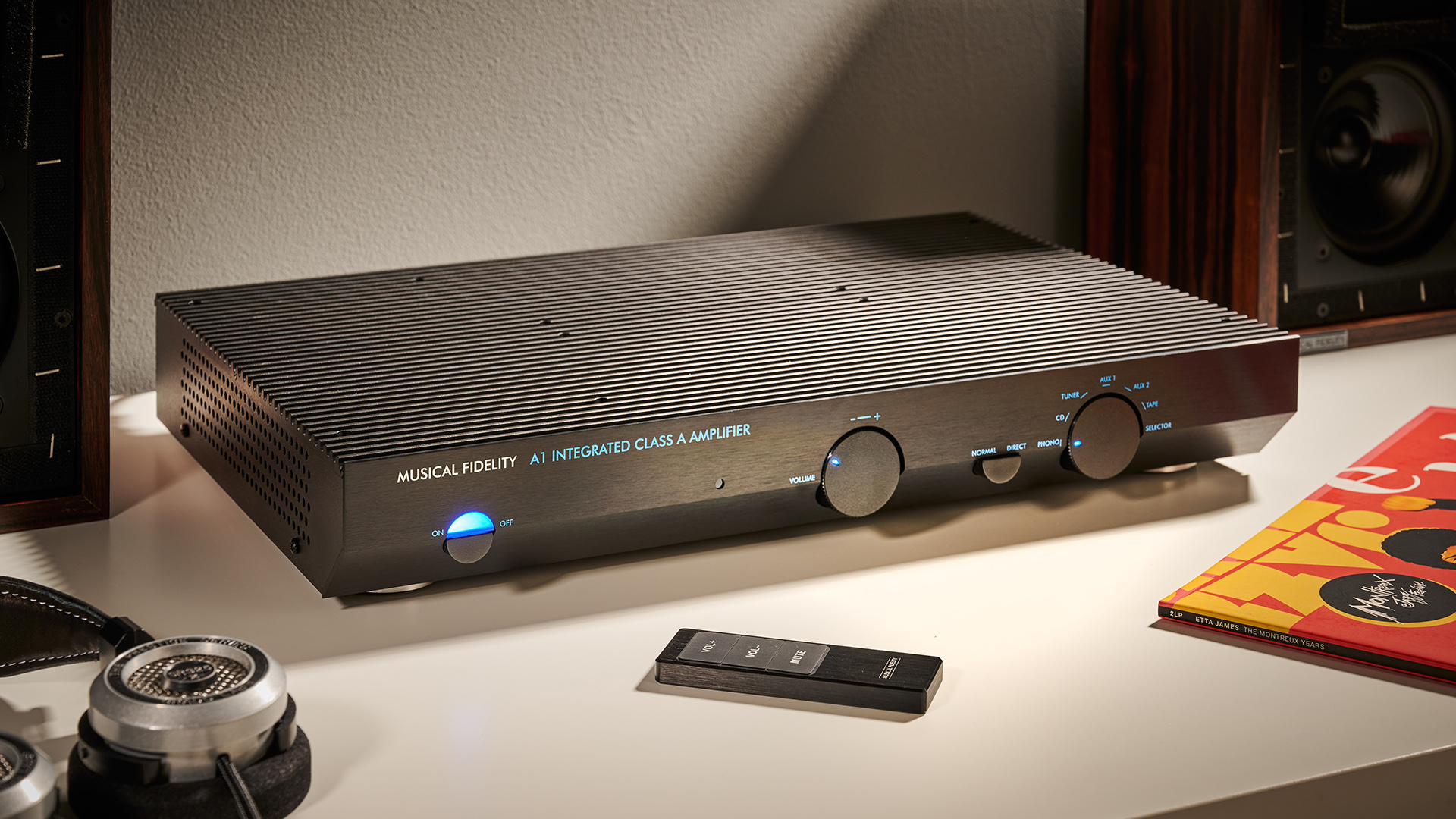What Hi-Fi? Verdict
This is a chance to own an 80s classic built to modern standards. The A1 has limitations but is hugely charming all the same
Pros
- +
Bold, smooth and effortlessly musical presentation
- +
Good phono stage
- +
It now has a remote control
Cons
- -
Still runs very hot
- -
Needs care in partnering
- -
Limited features
Why you can trust What Hi-Fi?
This review isn’t straightforward to write. Normally, we use a new product over an extended period of time, compare it to any natural rivals and then give our verdict. The problem with Musical Fidelity’s A1 is that it doesn’t have any obvious rivals.
Sure, you could look at it as just a rather basic, low-powered all-analogue integrated amplifier, and judge it like that, but we think that’s missing the point. This is clearly not a normal proposition. It is a (mostly) faithful remake of what is arguably Musical Fidelity’s most iconic product, one that was first manufactured in 1985. The company’s intention was never to offer a modernised version apart from having to meet current legal requirements.
Judging such a design by strictly by modern standards doesn’t quite seem right. So, rightly or wrongly, we’ve chosen to bend our usual rulebook and partially view the A1 through the lens of someone that might consider owning an original classic A1 amplifier but doesn’t want to deal with the uncertainties and reliability issues that come with any second-hand amplifier that is decades old. Does this resurrected design scratch that particular itch? Perhaps just as importantly, we are keen to find out if it still has anything interesting to offer modern hi-fi fans.
Build & features
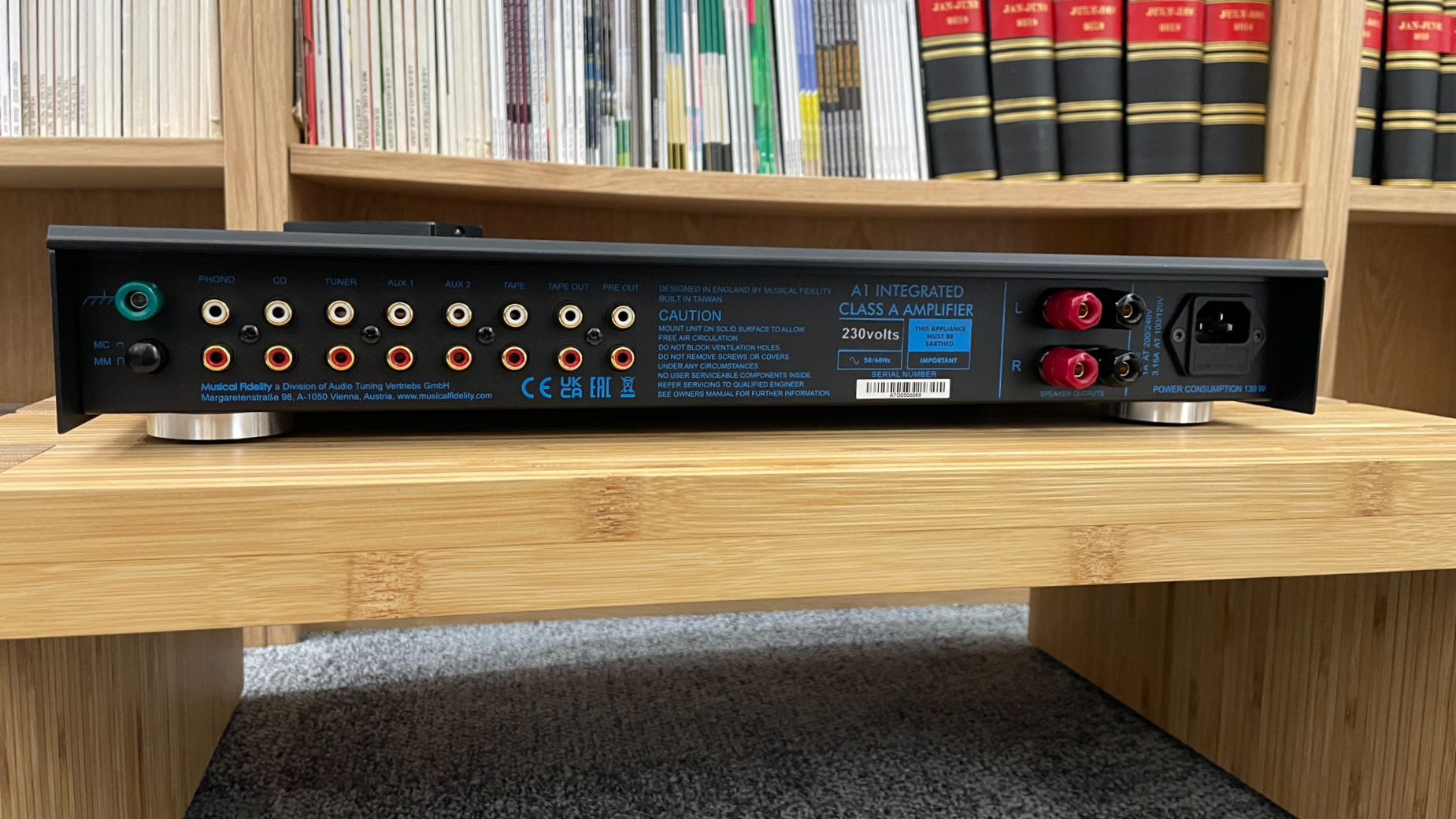
What made the A1 so unusual back in 1985, and continues to do so today, is that it uses an electrical circuit that is biased strongly in Class A. On paper such a design minimises distortion, so has obvious benefits for sound quality, but there are downsides too. Chief among these is that the circuit generates lots of heat. It is this issue that leads to the A1’s distinctive look, where the entire top plate is just a giant heatsink.
How hot does it get? We would liken it to a fully functioning central heating radiator. In the case of the new model, we could only leave our hand on the fluted top panel a couple of seconds before it becomes uncomfortable and that’s despite much of the development work that's gone into reducing that temperature.
To this end, the new generation’s casework is larger than before, so increasing the heatsink area and dissipating heat faster. Heat flow has been managed better inside the casework for the same reason. Electronics don’t tend to like excessive heat, and it is fair to say that early versions of the original amplifier gained a reputation for poor reliability because some of the internal components were under-specified. Musical Fidelity has avoided the same issues in this new version and improved its performance by updating components where necessary.
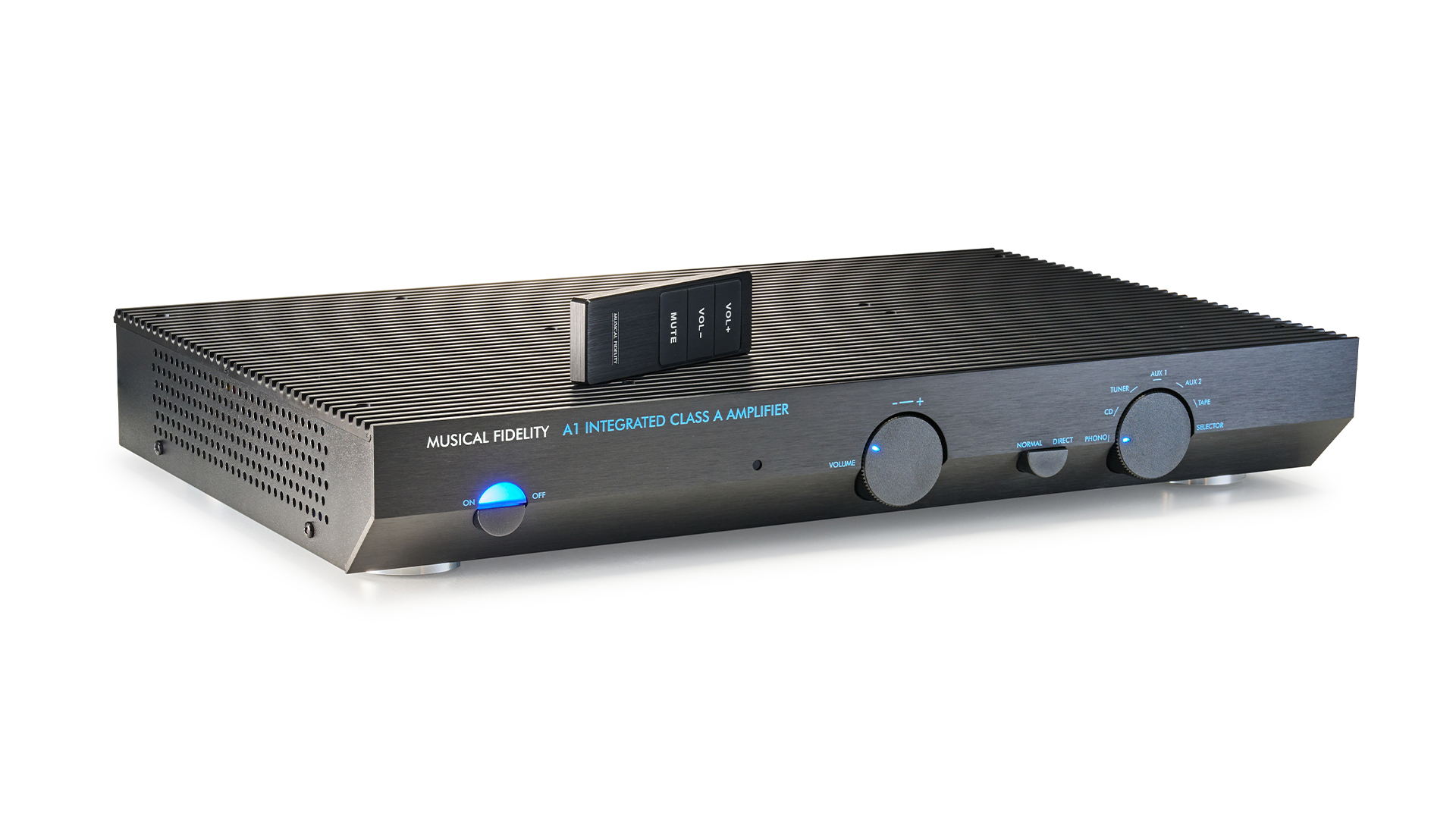
Type Integrated amplifier
Power output 25 watts per channel
Inputs x4 line-level inputs
Tape loop x1
Preamp output? Yes
Phono Switchable moving magnet/moving coil
Size (hwd) 6.8 x 44 x 28.3cm
Weight 10.5 kg
The company has been careful to stick to the original circuit for the most part. After all, if you mess with that too much it would be all too easy to dilute the model’s famed sonic character. But there are important differences. There are new output devices and the power supply arrangement has been improved, giving each power amplifier channel a separate and more generous feed. Despite the beefier power supply, the A1’s claimed output remains unchanged at 25 watts per channel. That is low by modern standards but it is backed up by a good chunk of current and the circuit’s ability to slide into Class B operation when the amplifier is pushed hard. The result is decently wide compatibility with a range of speakers.
Elsewhere, while the preamp circuit has remained mostly unchanged there is now an improved layout around the phono stage and a better-quality volume potentiometer, which is motorised to make remote control possible. Any form of remote control was a rare luxury back in the days of the original. The one fitted here only changes the volume level and includes a mute button. The small handset is as simple as they come but is metal-cased and feels nice in the hand.
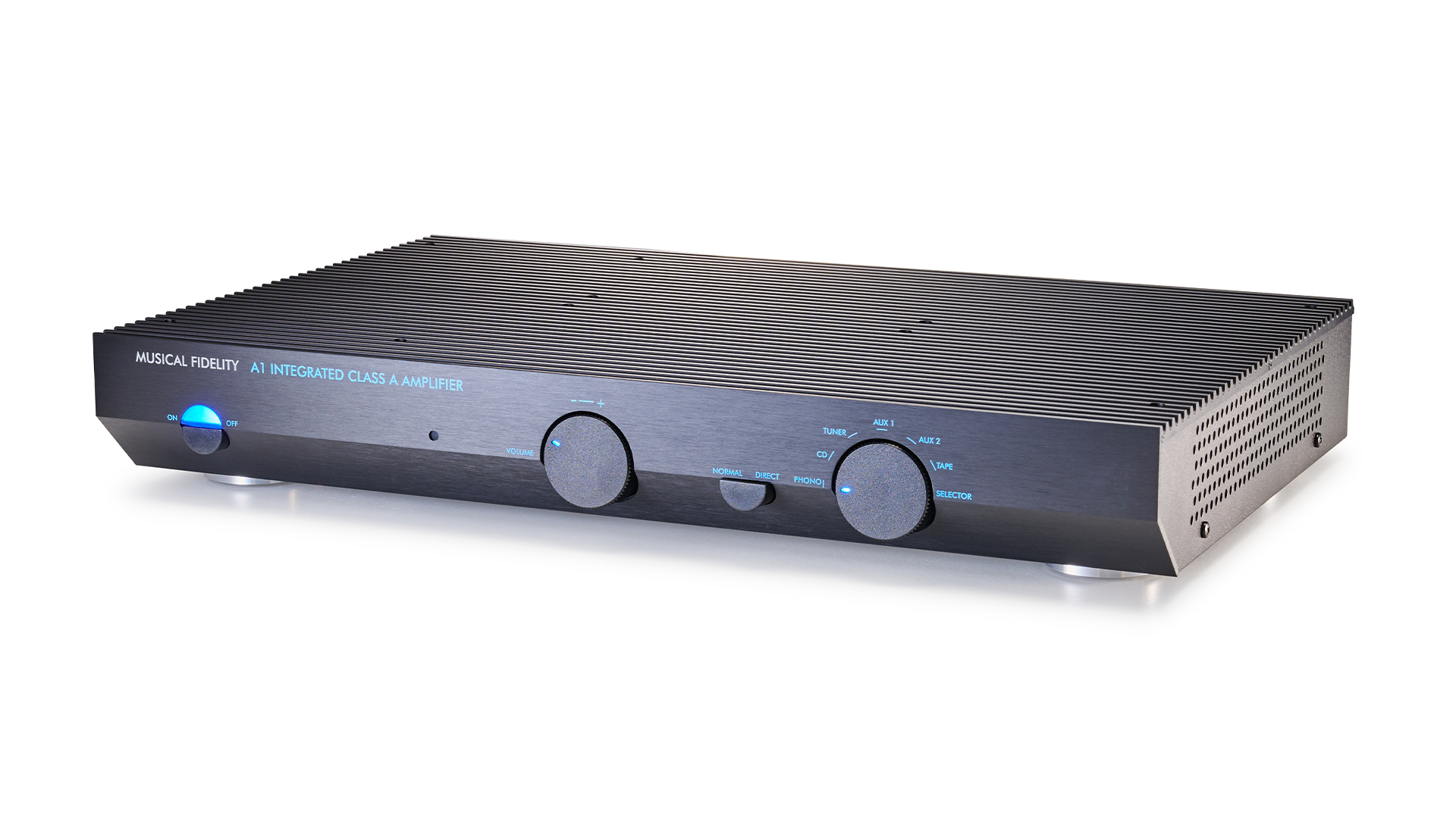
In a rather unusual move, there is a front panel switch that bypasses one of the preamp’s gain stages, reducing the overall gain by 10dB. This is intended for use with modern high-output sources that don’t need so much amplification and makes it possible to optimise the volume potentiometer’s travel for a given system. In use, we also find small benefits in overall transparency when we activated that bypass.
Vinyl was king back in the ’80s, so a good quality phono stage was vital for any amplifier with aspirations of greatness at the time. The A1’s phono stage can handle both moving magnet and moving coil cartridges and is reasonably quiet in use. There is a good array of line-level connections from four inputs to a preamp output and the now rarely-seen tape loop. This should be enough for the kind of stereo systems this amplifier is likely to end up in.
How about digital inputs or Bluetooth? Musical Fidelity isn’t trying to design a modern amplifier here and adding these things would turn this product into something else entirely (in the company’s view). That said, a truly forward-looking take on the A1 formula would make for an intriguing proposition.
Sound
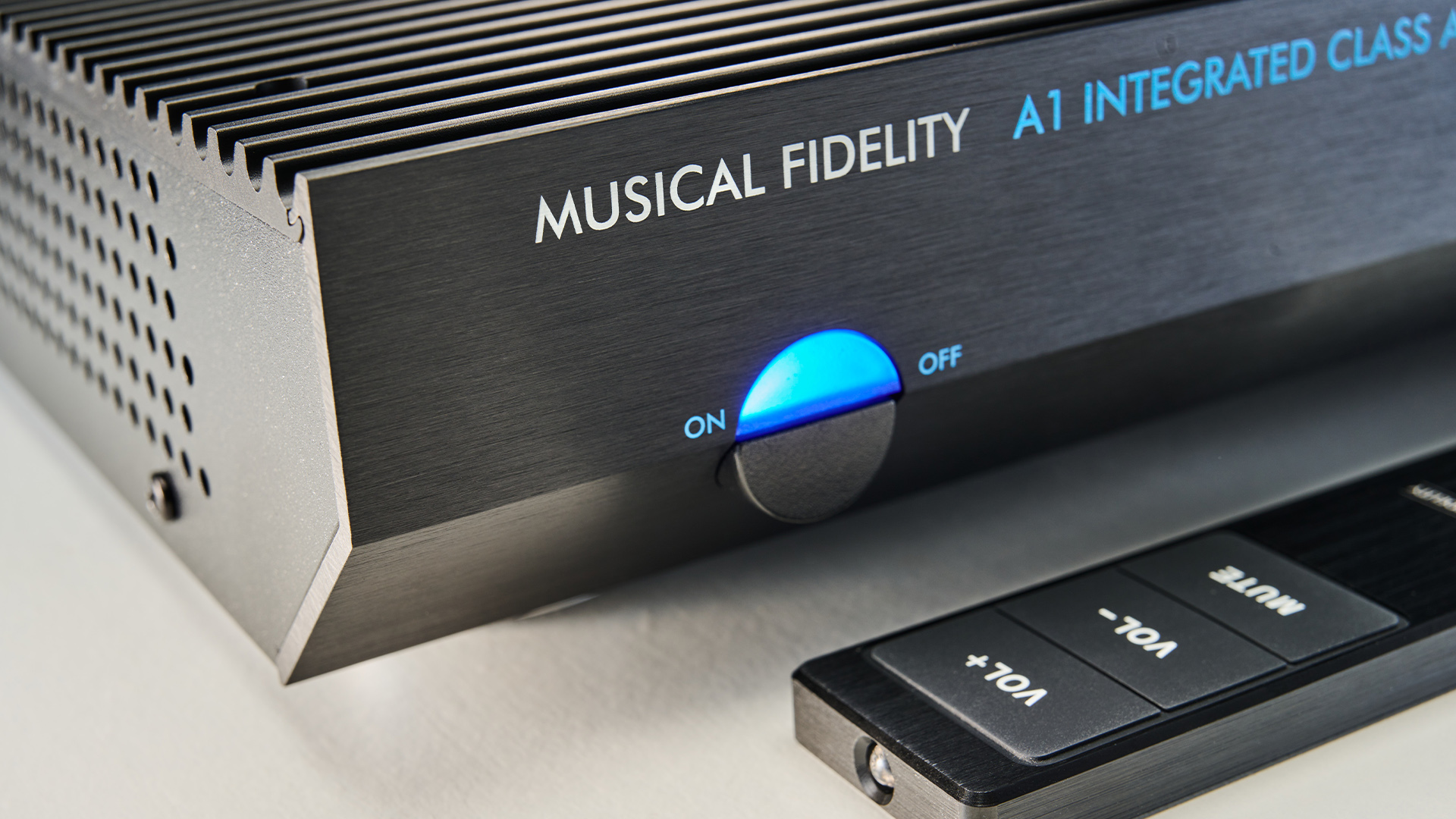
This integrated amplifier proves far more forgiving of speaker partnering than we expected. During our time with the product, we use our reference ATC SCM50, KEF’s LS50 Meta and a pair of Bower & Wilkins 606 S2 Anniversary Edition along with a pair of Musical Fidelity’s new LS3/5A monitors. The A1/LS3/5A combination looks far from promising given the amp’s modest power output and the speaker’s low 82.5dB/W/m sensitivity, but in practice, the pairing performs surprisingly well. Generally, this integrated behaves gracefully when pushed very hard. The A1 stays surprisingly listenable even as its dynamics compress and its grip on the music wanes.
It only seems right to start our review process with records, given the age of the original design. We place Mary J Blige’s No More Drama onto the platter of our Technics SL-1000R/Vertere Sabre MM record player and sit back. We aren’t sure what to expect at this point. This is essentially a mildly upgraded version of what used to be a budget amplifier in 1985. Its price on introduction was £189 (around $265 and AU$397), but this new one costs way more at £1499 / $1699 / AU$3000 and goes up against premium modern rivals that have benefitted from decades of advances in electronics.
It turns out we need not have worried. The A1 holds its own, principally by not even trying to sound like everything else. It echoes the original (a sample of which we have on hand) by sounding wonderfully expressive and fluid in a way that eludes most modern alternatives. There is more smoothness, warmth and physicality to the sound than is typically the fashion these days too. It could hardly be described as neutral but we like it anyway.
As we listen to Blige’s Family Affair we note that the new A1’s presentation is cleaner, more dynamic and better controlled in the bass than before. While not as precise or emphatic as Naim’s Nait XS 3 when it comes to delivering rhythmic drive and punch, the A1 still gets our feet tapping. This is a fun listen. It is a bold and confident rendering with a beguiling midrange that allows Mary J’s vocals to brim with passion.
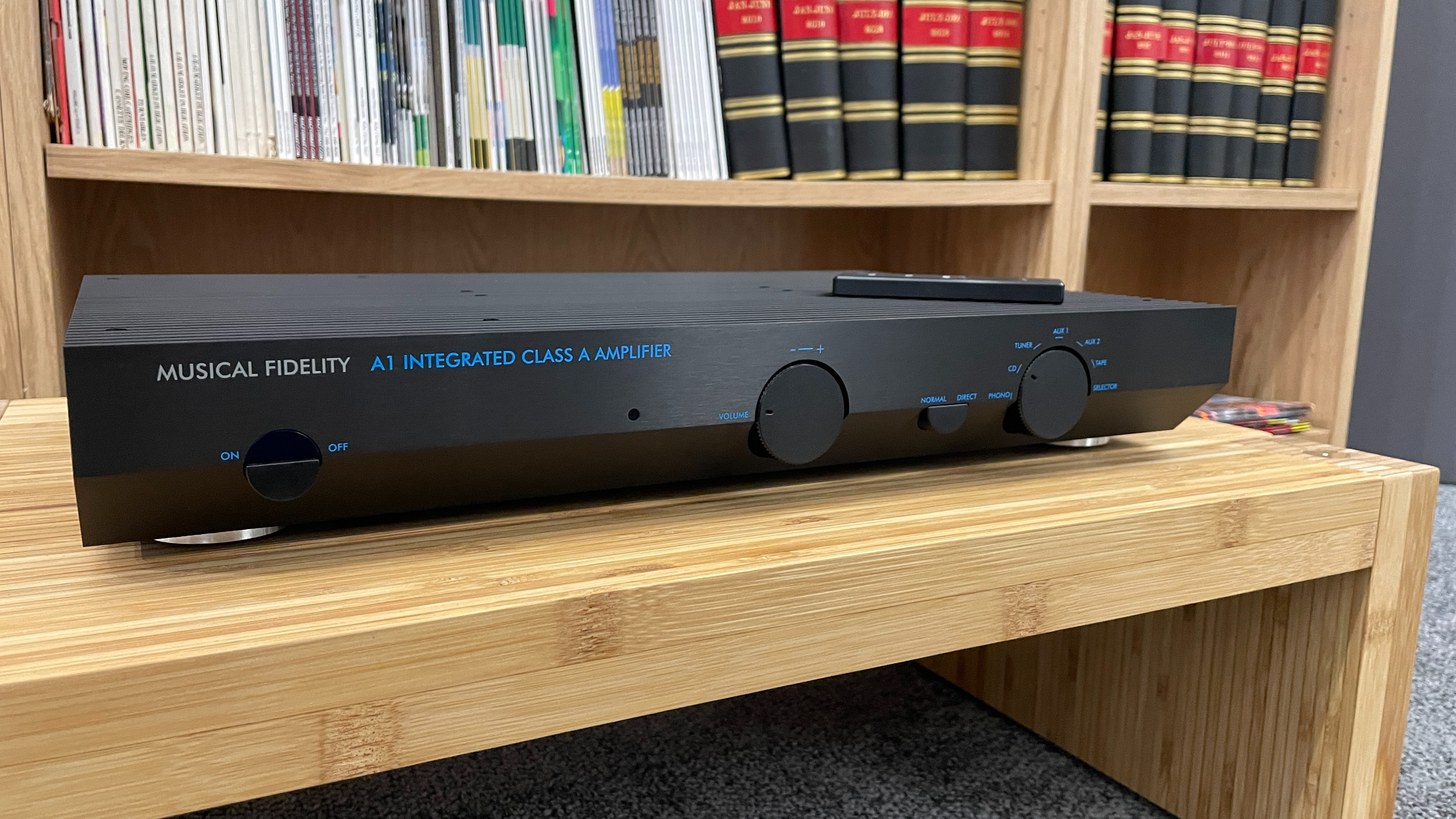
We’re happy with the Musical Fidelity’s control and composure as long as the volume levels aren’t pushed too hard. Stay within the amplifier’s usable, but relatively modest, limits and you will find that it gives a large-scale sound that’s hugely appealing for its solidity.
We try the A1’s moving coil option by swapping out the Vertere Sabre moving magnet cartridge for an Ortofon Quintet Blue MC. The MC option proves decent, letting the Ortofon’s character and talents come through. The phono circuit isn’t the most transparent we’ve heard but is pretty competitive for the money.
We switch to Dvořák’s New World Symphony from our reference Naim ND555/555 PS DR music streamer and the A1 continues to please. It generates an expansive and nicely layered soundstage that stretches beyond our speakers, and that image remains pretty stable even when the music gets demanding. We like the richly-textured way this amplifier paints instruments and its ability to convey subtle changes in dynamic intensity without forcing the issue. Larger-scale dynamic shifts are still delivered with conviction though, but more conventional rivals pull ahead when it comes to outright punch and attack.
Verdict
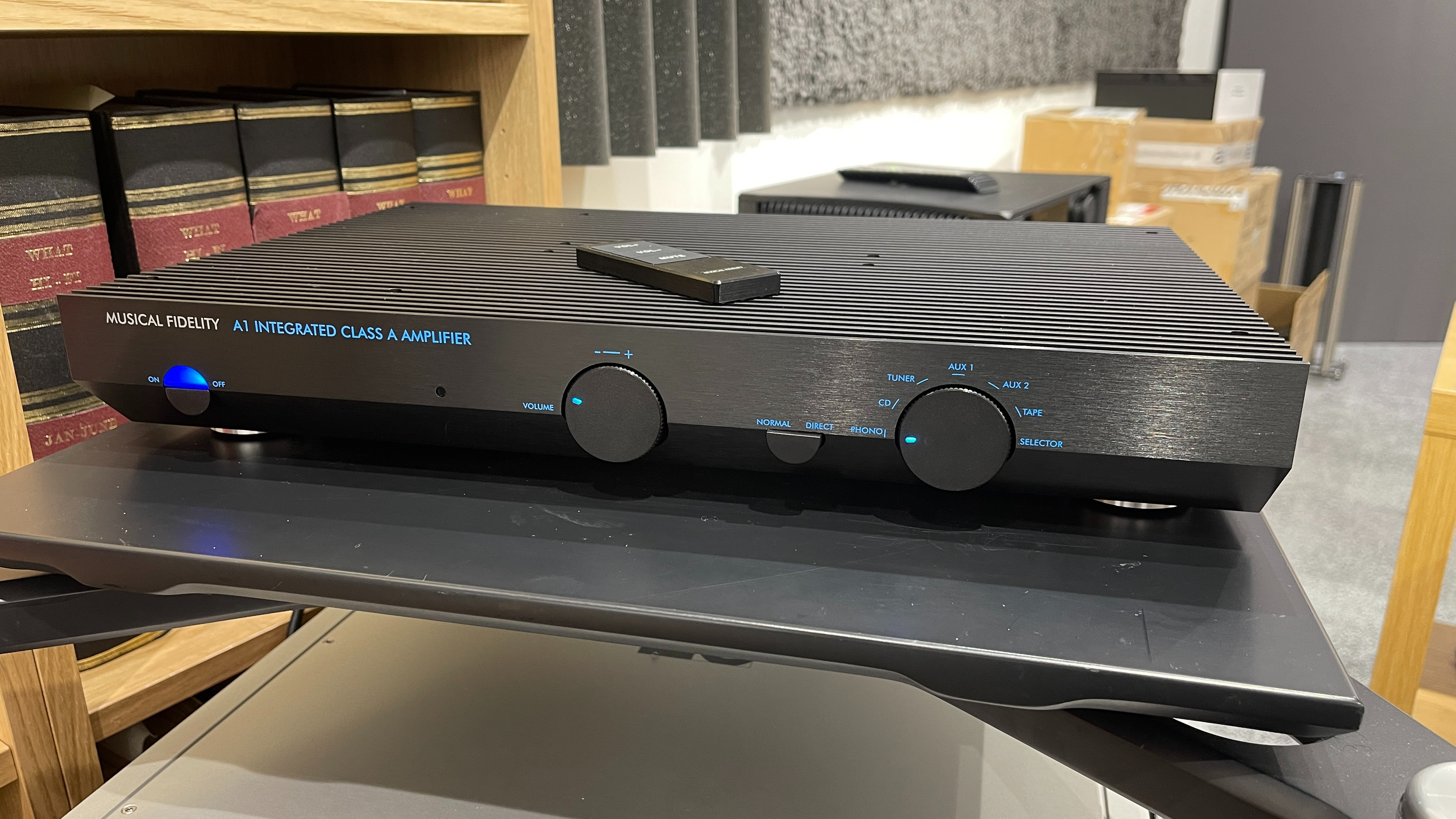
If you are looking for the last word in analysis then this isn’t the amplifier for you. Absolute detail levels and insight are pretty good, perhaps even surprisingly so given the age of the design, but newer rivals, even something much cheaper like Cambridge Audio’s CXA81, manage to tell us more about the recording. Detail resolution is clearly the area that has progressed the most through the decades. But look at the bigger picture and you will find that the A1 remains good at conveying the energy and intent behind the music. It may not give you every last drop of information in the recording but you won’t be left in any doubt about the emotions you are meant to feel.
This clearly isn’t an amplifier for everyone. The fact that it runs so hot (and uses lots of power while doing so) will be an issue for some. The A1’s relatively low power output could be another issue. But it is hard to have anything but admiration for Musical Fidelity for bringing back such a classic amplifier in such a faithful way.
This is a truly charming product, and we love the way it looks. If you want a taste of a classic hi-fi product but with the reassurance and reliability of buying new, dive right in.
SCORES
- Sound 4
- Build 4
- Features 3
MORE:
Read our review of the Rega Elex Mk4
Also consider the Naim Nait XS 3
That Was Then... Musical Fidelity A1 (1985)
We speak to the designer behind the new Musical Fidelity A1 amplifier
Best stereo amplifiers: the best integrated amps you can buy
Class A, Class A/B and Class D designs: what does it mean for amplifiers?
What Hi-Fi?, founded in 1976, is the world's leading independent guide to buying and owning hi-fi and home entertainment products. Our comprehensive tests help you buy the very best for your money, with our advice sections giving you step-by-step information on how to get even more from your music and movies. Everything is tested by our dedicated team of in-house reviewers in our custom-built test rooms in London, Reading and Bath. Our coveted five-star rating and Awards are recognised all over the world as the ultimate seal of approval, so you can buy with absolute confidence.
-
npxavar If the Cambridge Audio CXA81 offers better sound, while also including a high-quality DAC, then the A1 has gone from budget to overpriced.Reply
For reference, the inflation-adjusted price of the original according to an online BoE calculator is £557.15. -
G13 Reply
I also feel it's overpriced. They should sell it for around a thousand euros. Then they would sell a lot i think.What Hi-Fi? said:Musical Fidelity resurrects the iconic A1 amplifier design of the 1980s and it is still a charmer.
Musical Fidelity A1 : Read more -
Hifiman I think the review is right in saying that this amplifier is only really for people who yearned for one back in the 80s. Having lived through that hifi period, I fear that the problem for Musical Fidelity is the A1 was not a hugely desirable amplifier back then and, even if some felt it was, it was so affordable at the time that they probably would have owned it. I agree with others here that the ‘nostalgia premium’ being placed on newer products like these (I’m looking at you too Nait 50) is too high and at odds with the incredible value for money the same companies sought to provide when these products were originally released.Reply -
yorsioi Reply
I agree that the price of Musical Fidelity is quite expensive. But, the value it brings is well worth it.G13 said:I also feel it's overpriced. They should sell it for around a thousand euros. Then they would sell a lot i think. coreball -
Mr. C Nation They picked the wrong amp to relaunch. The B1 please M.F. I had one for 25 years before no digital inputs became a deal breaker. The B1, at 'only' 25W was quite capable of driving a pr of large Rogers L7's.Reply
Sorry to repeat ad naus but 'The Gramaphone' mag, back in the mid 80's, reviewed the B1 and concluded it was 'unneccessarily good'. And that mag's content was 75% reviews of music releases and only 25% hardware, so they were picky about what they reviewed.
It's absurd to reintroduce any electronc component that runs so hot. In the 40 years since the original there are now many other ways to amplify input signals to sound good.
I know all these companies need to make a living but the cost of a TV sound bar is better spent, in my opinion, towards a good stereo amp with digital connections and a quality par of speakers. Leaving out digital connections is either a ploy to get people to buy outboard stuff or just an aberration.
It seems there's a rash of 'revivals' in the audio electronics world, led by the fad for 12" vinyl and turntables. In the 40 years since the launch of the CD, digital audio has not gone backwards to the extent that a needle scraping round a jiggly groove in a plastic disc has become superior at transcribing signals to analogue sound.
I had a Rega Planar, the default mid-tange t/table, back in the 1990's. I also had bought CD copies of all my 12" albums. When I came to move in'99 the t/table was still in its box. Nobody used t/tables back then - CD's had been the source for 15 years. I pitched the t/table into the bin.
